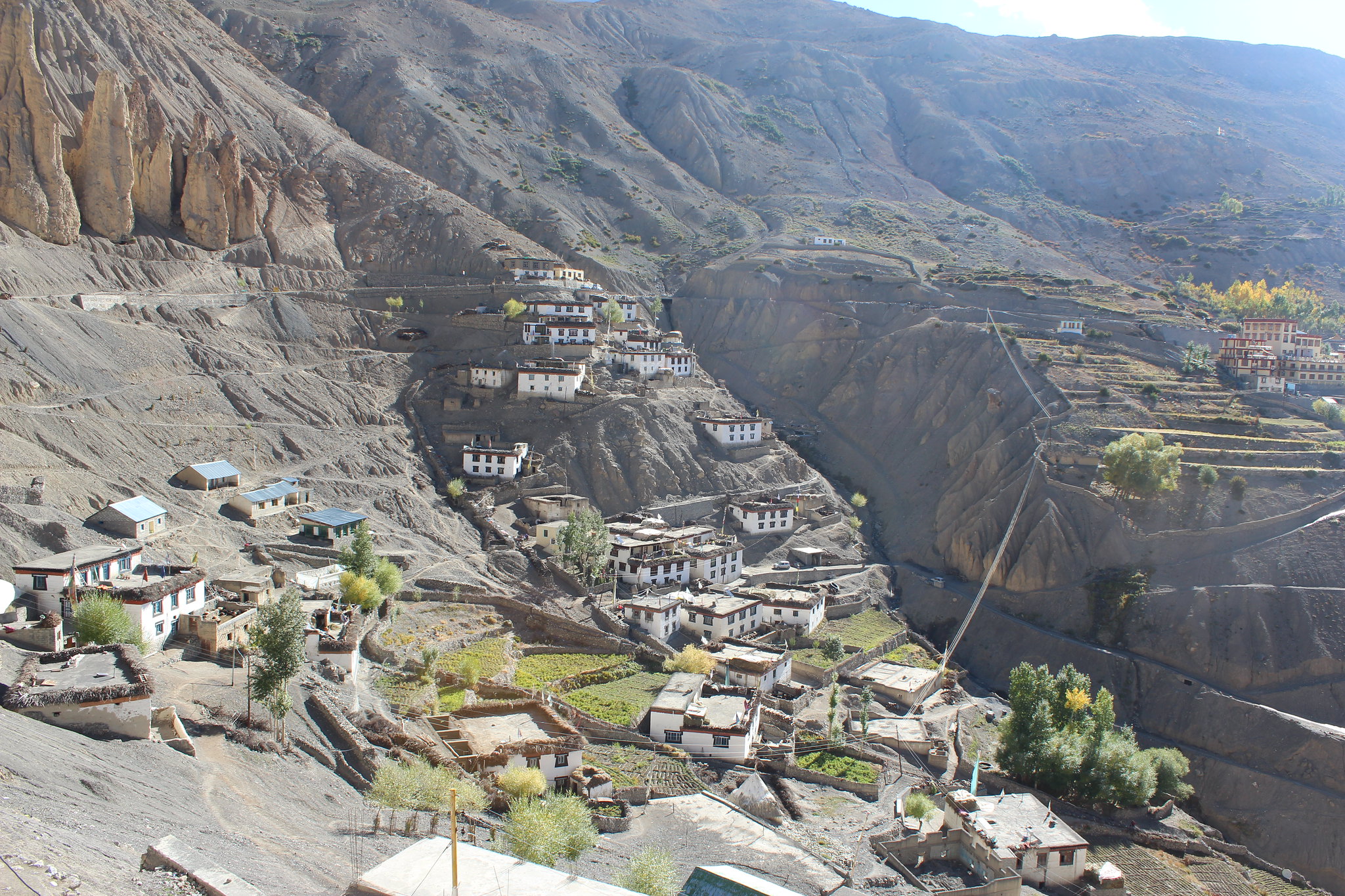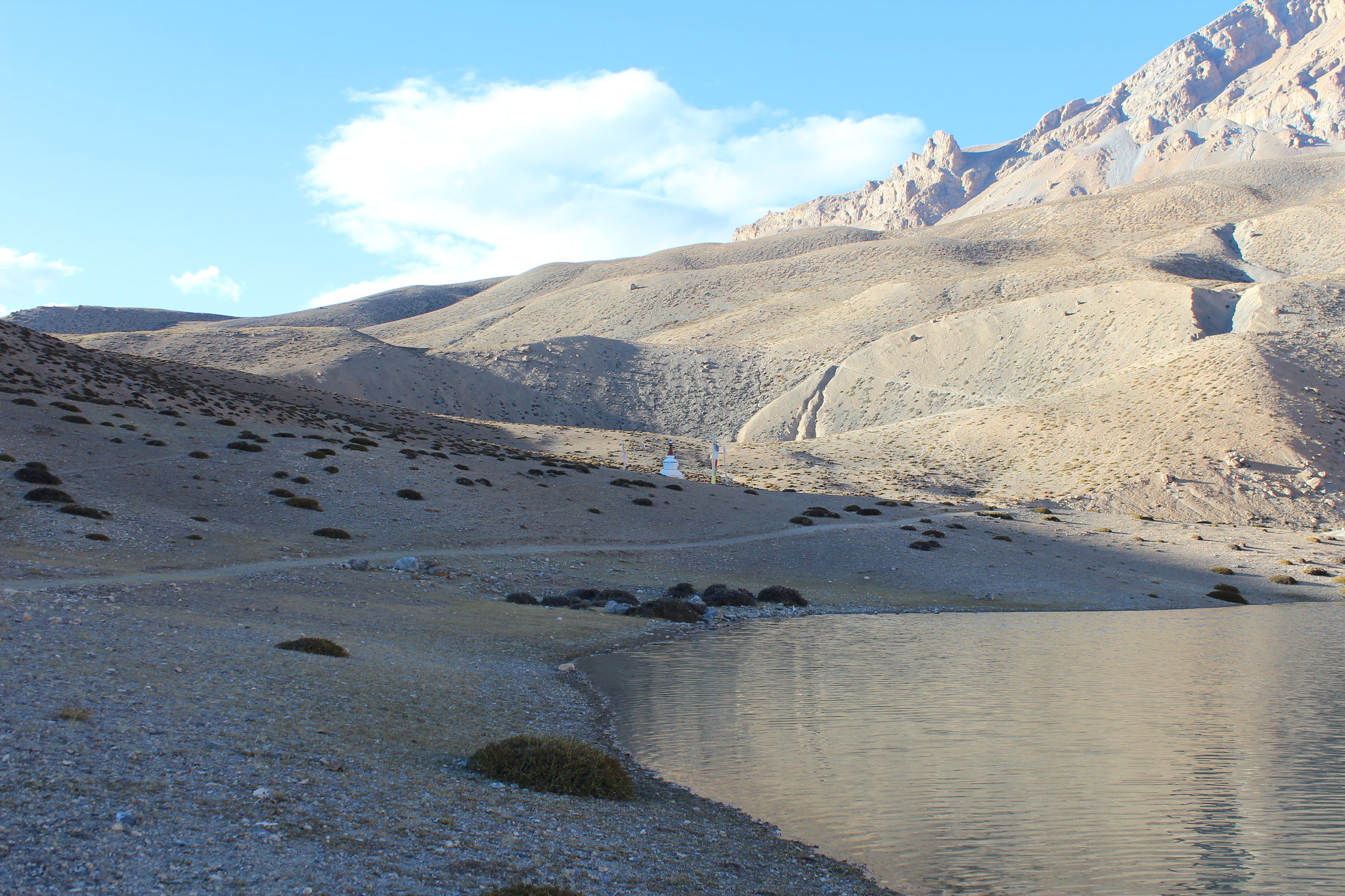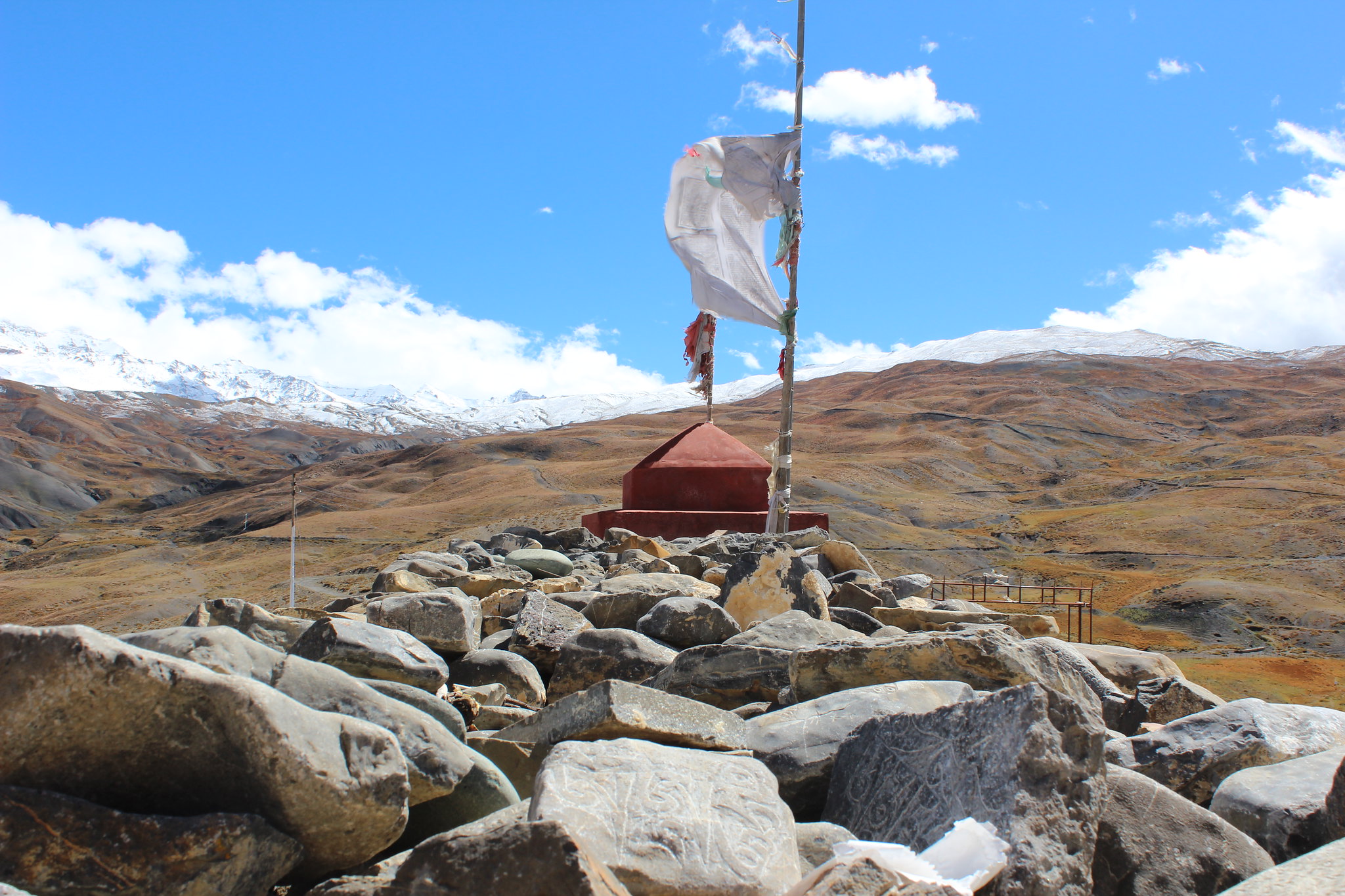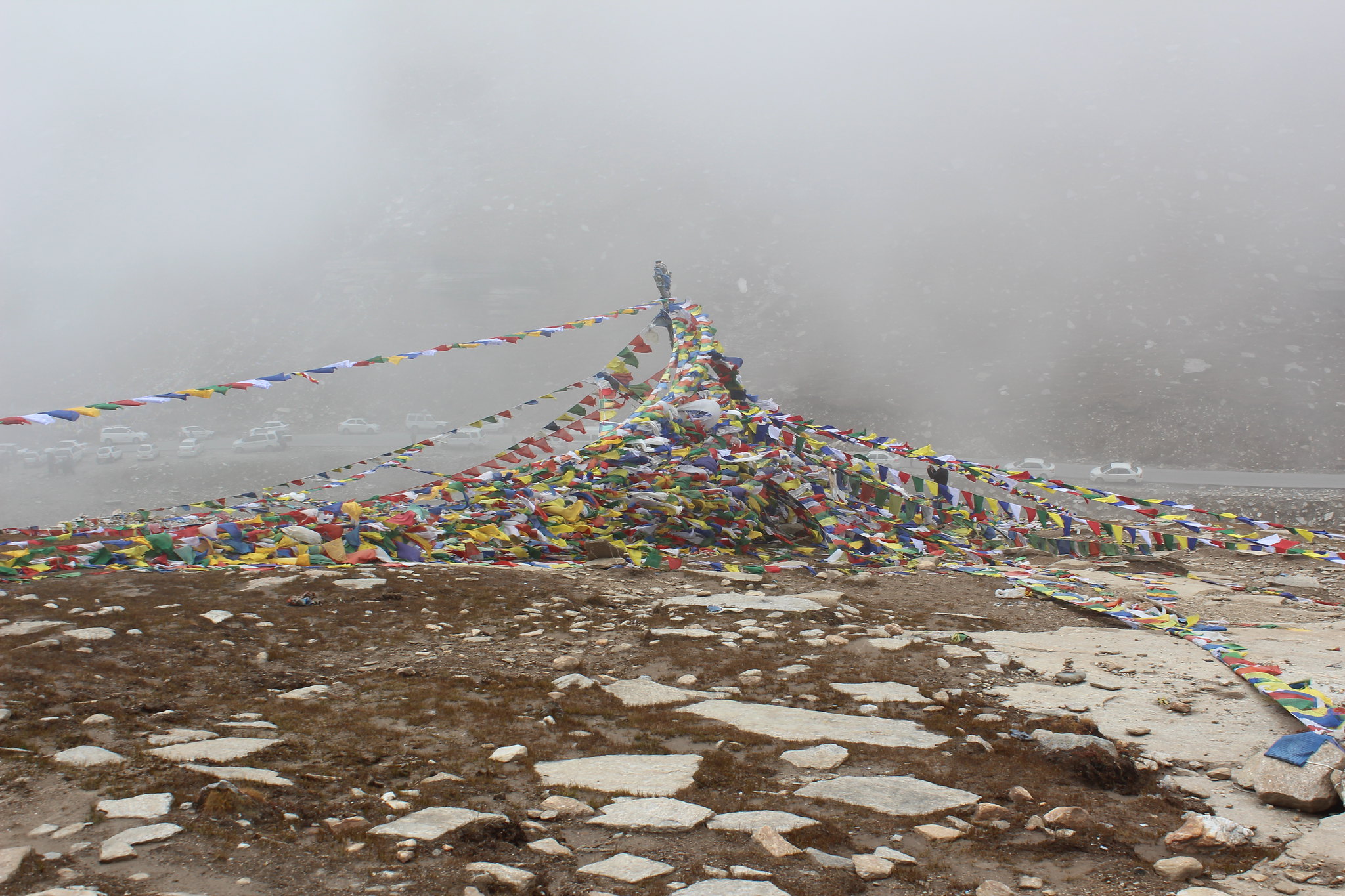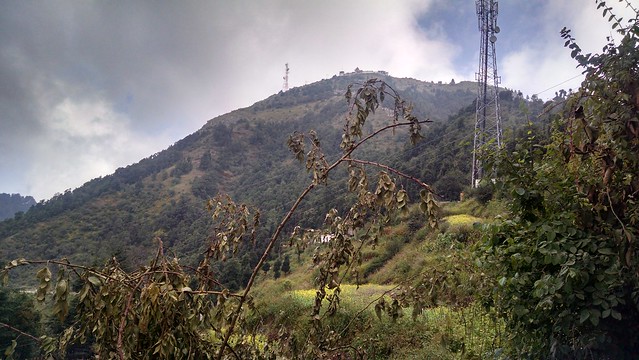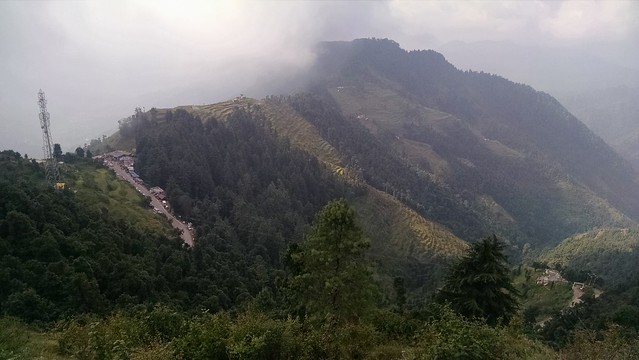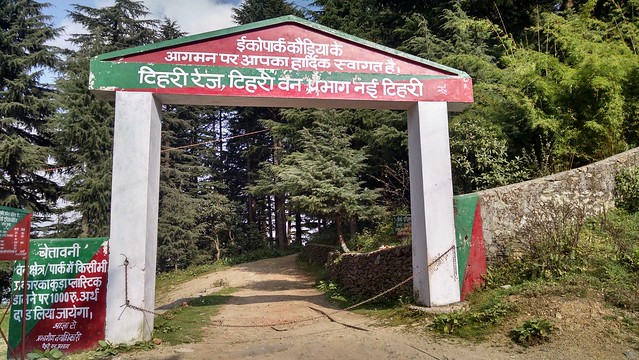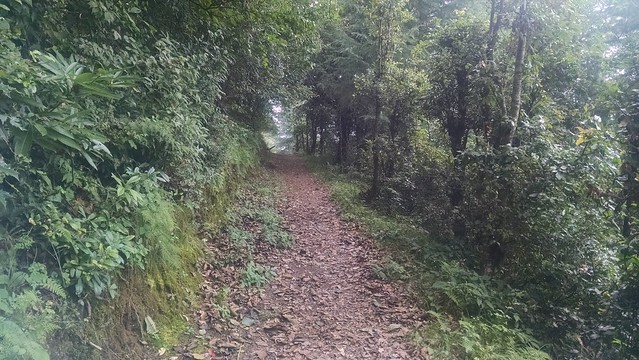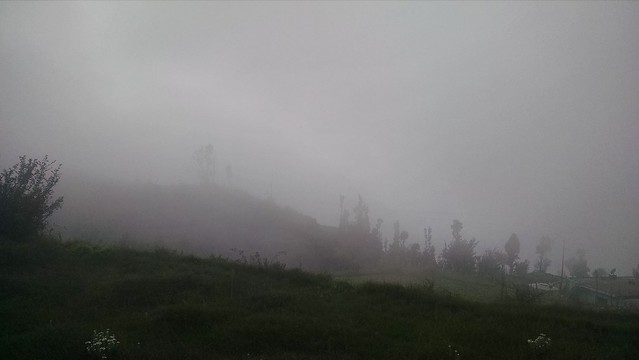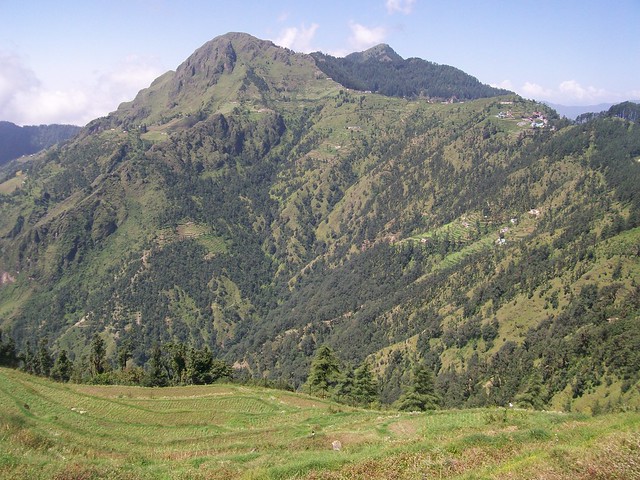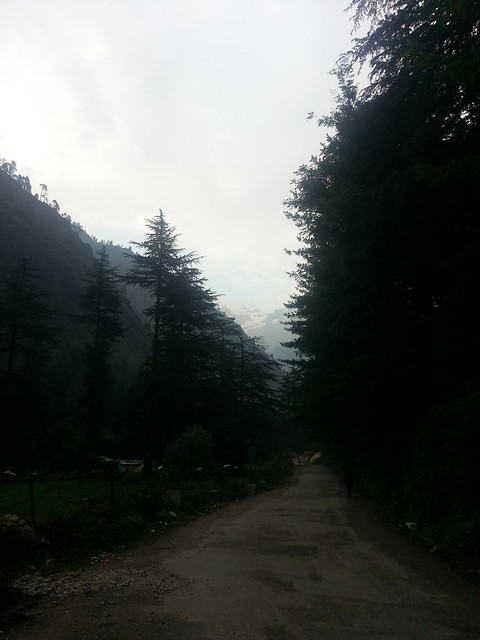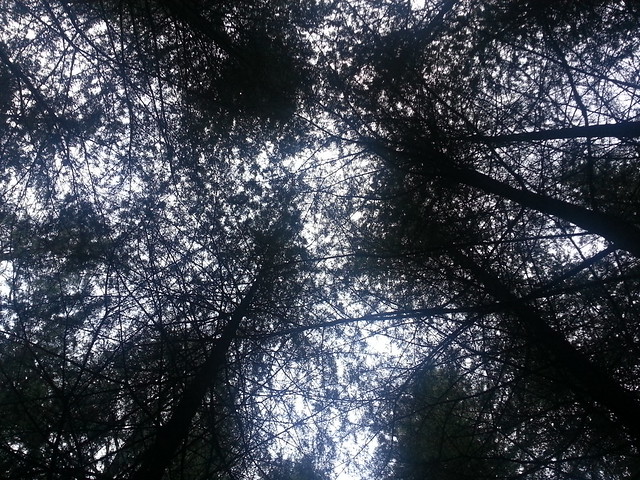 |
| Spiti River |
We went close to the Spiti River. Spiti River originates near Kunzum Pass and flows in the southeast direction before it meets Sutlej River. The dark color water flows over the pebbles peacefully. This tranquility is a characteristic of the Spiti valley and its deep relationship with Buddhism. As there is not much rainfall in the Spiti Valley, the river gets most of its water from the Himalayan glaciers and many streams join it. Pin river is one of the most significant ones to join it. We had read somewhere that Pin Valley National Park also provides beautiful views but we could not go there. Pin Valley starts near the Dhankar Gompa in Spiti Valley. Spiti River occupies only a small portion of the bottom of the valley. The similar pebbles near the course of the river suggest that either the water level of the river increases as some point of the year or the river has changed its course. Normally in India, September is one of the months when rivers carry a huge amount of water because of the monsoons. The same cannot be said about Spiti River.
Unlike Kye Gompa, Tangyurd Gompa, and Dhankar Gompa which are situated at cliffs, Tabo monastery is at the bottom of the valley. Tabo monastery was built in 996 AD and that makes it the oldest in India. A few years back it celebrated its thousandth anniversary which was attended by the Dalai Lama. Inside the monastery, we were allowed only to visit the main temple. There was a big buddha statue and the temple was naturally lit. We were told that there were old wall-paintings in Tabo monastery, of which we could only see glimpses in the temples. There were stupas built inside the monastery. Like Dhankar monastery, Tabo monastery also belongs to Gelugpa sect. Due to its very old wall-paintings and manuscripts, it is also called the Ajanta of Himalayas.
Tibetan Buddhism is the religion of this part of the India and also of the Ladakh, Sikkim, Tibet and parts of Nepal. The sixth century onwards, the rulers of Tibet showed interest in Buddhism for various reasons including their marriage to Buddhist princesses. Then a tantric Padmasambhava from India arrived in Tibet and preached Buddhism in Tibet. Later on, folk elements were assimilated in Tibetan Buddhism. Tibetan Buddhism is different from the Buddhism practiced in other parts of the world like Sri Lanka and South-East Asia. Buddhism spread in these areas much earlier and is based on the early interpretation of Pali Canons. Tibetan Buddhism was inspired from Indian Buddhism which in turn borrows few elements from Hinduism like multi-armed statues of deities. Tibetan Buddhism believes in the reincarnation of Dalai Lama.
Keeping up the spirit of trying new things in the trip, we tried Thukpa in Tabo. Thukpa is a noodle soup with its origin in Tibet. Apart from the noodle, it contained tomato, capsicum, and few other ingredients. In Tabo, there are only a few places to eat. Someone told us to go to a home where they provide some food items. It was a small house. The Dhaba was operated by the family only and not many people were dining there. We did not find too many tourists in Tabo. We might have been there in the off-season or Tabo is still not that popular destination. Few houses in Tabo had apple gardens. Tabo was the last destination of our trip. The road from Kaza to Tabo goes to Nako also which is very close to India-China border and then continues to Shimla as part of the Hindustan Tibet Road. It was time to return to Manali.
When I look back and remember the days spent in Spiti Valley, it brings a joy and satisfaction. I do not know how to summarize the trip in a paragraph and I would not dare to. Probably my remembering-self has remembered too many things. I do not know what to say about my experiencing-self because whatever bliss it achieved was left there in the Spiti Valley. Those high barren mountains; those long and narrow roads and paths on pebbles; those peaceful and crystal clear streams; those villagers and their hospitality; those Gompas and learned lamas; those high-altitude lakes and reflection of mountains in them; those deep valleys with layer after layer of its sides telling the history of tectonic activities; those strong winds making their mark on the mountains; everything is etched in my memory like all of this happened only a few days back. When one comes to the Himalayas, a part of oneself is forever indebted to nature. And in that moment of gratitude, I promised to return to the Himalayas, again and again.
 |
| The entrance of Tabo Monastery |
 |
| Tabo Monastery |
 |
| Stupas in Tabo Monastery |

